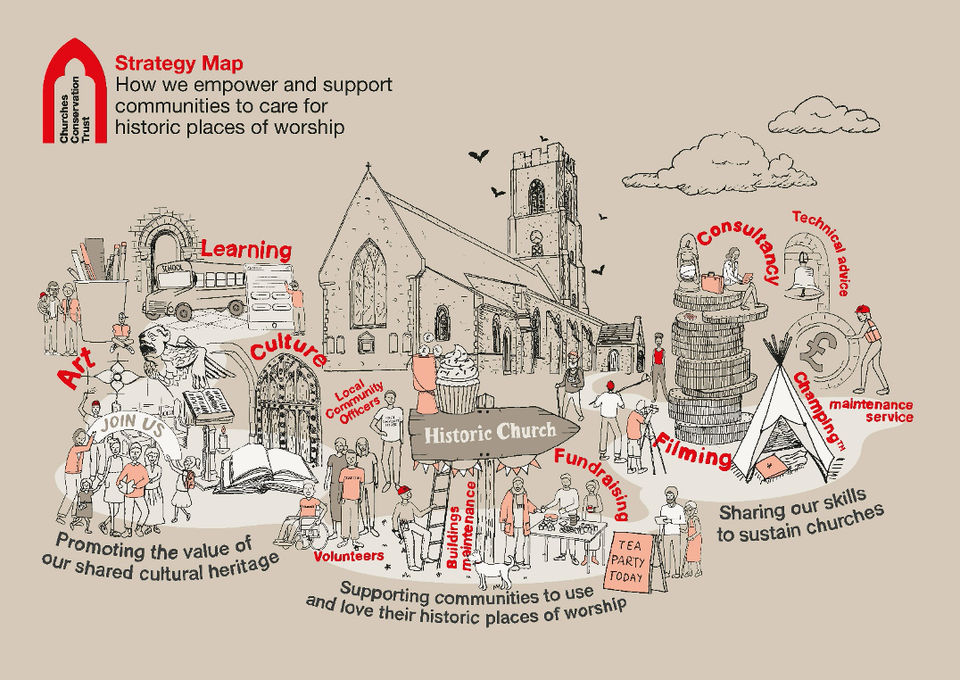About the CCT
Our 5 year strategy focuses on how we empower and support communities to care for historic places of worship. This strategy has been developed in full consultation with staff, volunteers and stakeholders.
Supporting Communities To Use And Love Their Historic Places of Worship
The CCT has responsibility for a growing collection of historic churches. In order to best care for these buildings it is essential that they are used and loved by the local community. Where there are historic churches with a motivated and well-supported community the building thrives.
In order to deliver this first pillar of our strategy, we have devised a network of Local Community Officers who will create and maintain relationships with the communities around CCT churches. We will support communities to use their historic church and raise the funds necessary to keep it in good repair.
Our Conservation Team will continue to provide an excellent maintenance service to our historic churches and will manage a national list of repair priorities. This element of the strategy also allows the CCT to consider how we might support communities to care for their historic places of worship beyond the CCT collection.
Sharing Our Skills To Sustain Churches
The CCT will invest in the development of commercial activity in order to invest the surplus generated in the conservation and repair of our collection of historic churches.
The initial areas of investment will be in Champing™, our consultancy work and the development of our fledgling maintenance service.
The Head of Enterprise will drive and develop the profitability of our commercial work. This role will also advise how we invest and develop flagship visitor churches.
Promoting The Value Of Our Shared Cultural Heritage
The CCT is concerned that there is a precarious future for many historic places of worship. We seek to ensure that society continues to value these buildings for their social, architectural, historical, aesthetic and cultural qualities.
We will develop and grow our supporter base. We seek to gather a strong voice for all of those who value historic places of worship in their community.
To ensure that historic places of worship remain relevant and important to society, the CCT will develop a learning programme to explain these complex buildings.
The key is recognising what these buildings can contribute to modern life; whether as a hidden gem to discover during a walk on the moors, a centre for people to meet, or even, in one case, the home for one of Europe's most prestigious circus schools. Importantly our churches remain, at heart, complete. They are never deconsecrated, their spirit remains and a few even return to parish use if that is the best solution for them.
In the last financial year, 92% of the CCT’s expenditure went on frontline projects to repair churches and support communities. At £8.3 million, ‘Church repairs and maintenance’ continues to be the main call on our funds. Compared to the previous year, this represents an increase of £3.1 million or 59%.
£1.9 million was spent on ‘Supporting volunteers and communities, keeping churches open’ (2019/20 £2.1 million) and just over £0.9 million or 8% of our expenditure goes on fundraising and communications (2019/20 £1.1million 12%).
Our conservation and regeneration work has been recognised by national and international bodies and has won awards such as the RICS Building Conservation Awards, the Hudson's Heritage Awards and the EU Prize for Cultural Heritage.

